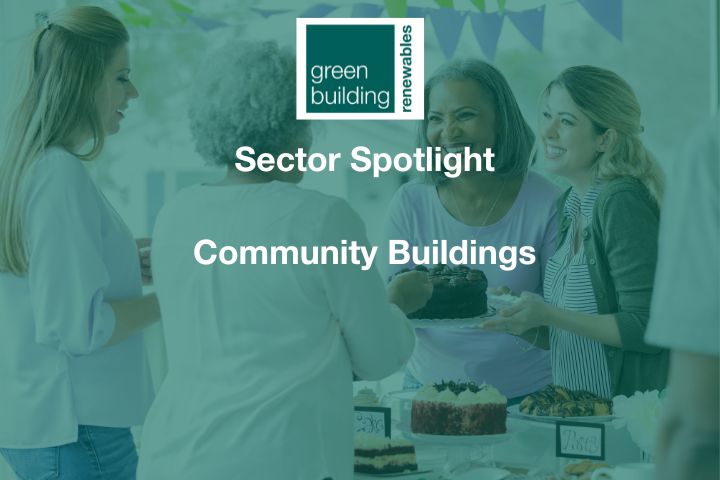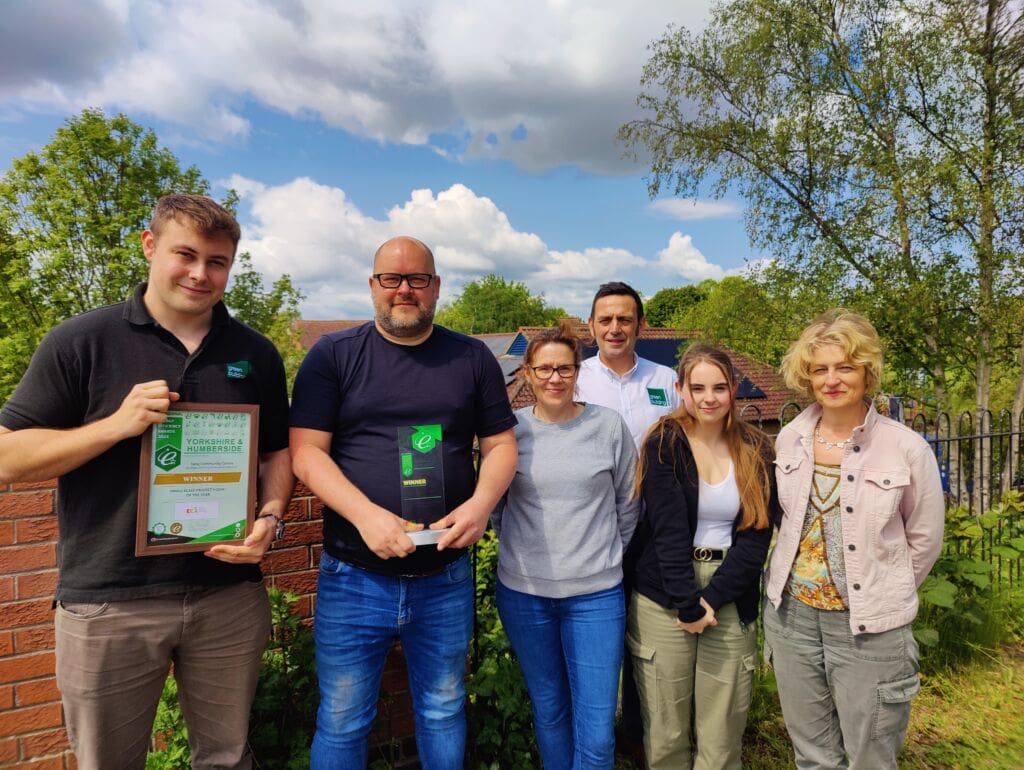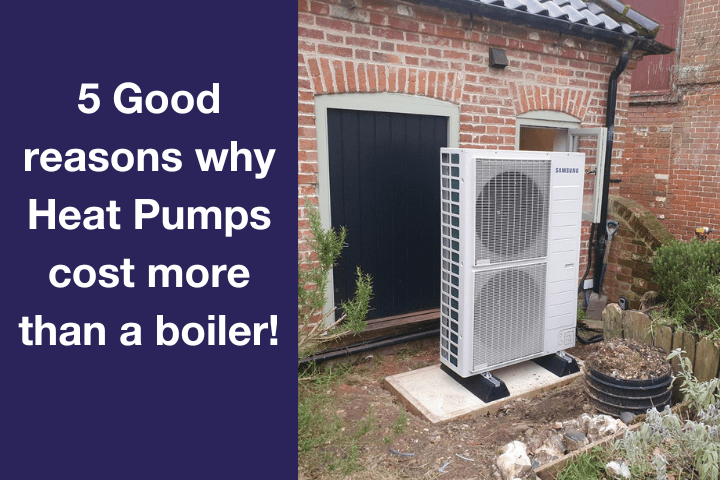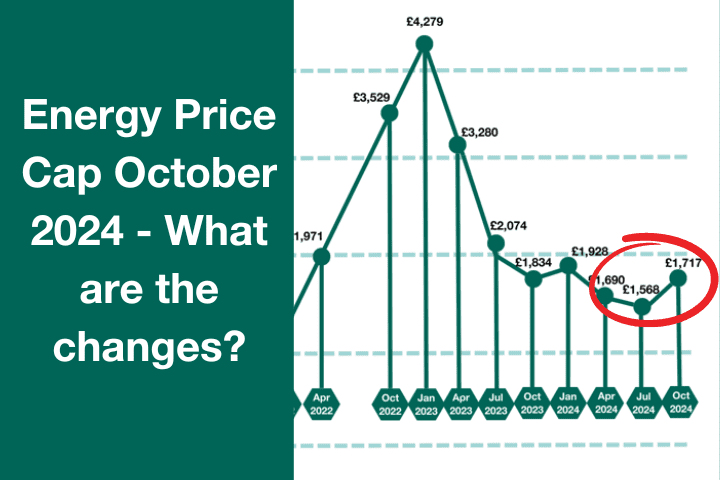Why installing renewable energy can transform local community buildings and organisations for the better

At Green Building Renewables, not only do we install renewable energy systems, like solar PV systems and air source heat pumps, into residential properties. We also have a commercial team specialising in designing systems for non-residential buildings, including offices, factories, industrial units, sports venues, schools, churches and community buildings.
Local community buildings are ideal candidates for solar energy systems. Community buildings are often large and have a high energy demand. Solar PV and battery storage systems can help to reduce the energy costs of community buildings.
One of our community building installations, Tang Hall Community Centre, recently won recognition for its solar PV installation at the Yorkshire Energy Efficiency Awards, which is an excellent reward for its commitment to sustainability. But the biggest reward for the Community Centre has been the fact the solar panel installation has helped the centre survive the energy price crisis by making thousands of pounds of savings.
So, why should community buildings consider solar PV? Find out more in this blog.
Table of Contents

What are the benefits of solar PV and battery storage for community buildings?
Community buildings have many uses. They can be vital lifelines for the people who use them. They offer a range of services and cater to many community groups. In the last few years, during and following the Covid-19 Pandemic, many community buildings became even more important to their local citizens providing critical services like food banks, vaccination centres, and community support forums. However, in the last year, many community buildings have faced a challenge far more damaging to their survival – the energy price crisis.
Many community centres, which are often older buildings needing improved fabric, have faced dramatic increases in energy costs. Many local organisations that manage community centres are looking at ways to reduce their energy bills, and renewable systems like solar PV and battery storage are a way to achieve this. So, why should community buildings in the UK adopt this clean energy technology?
- Reduced energy costs: Solar energy systems can help to reduce the energy costs of community buildings. Community buildings have seen their electricity bills dramatically rise in the last year. Solar PV and battery storage allow community centres to generate and store their electricity and reduce the energy they have to draw from the grid, providing substantial long-term savings. Community buildings often consume a considerable amount of energy due to their size and the activities they host. These buildings can offset a significant portion of their energy costs by generating their electricity through solar panels and storing the excess. This allows them to allocate funds towards other essential services and programs that the building may need or provide. Due to the nature of commercial buildings and their, more commonly, higher energy usage, payback periods tend to be even quicker than those of standard domestic installations. A full energy assessment of any project can determine payback and allow us to create a bespoke renewable solution.
- Environmental Impact: Community buildings, such as libraries, community centres, and public institutions, have the potential to make a significant positive impact on the environment. These buildings can generate clean, renewable energy and reduce their carbon footprint by installing solar panel systems. By shifting to solar power, community buildings can actively mitigate climate change. This is particularly relevant for many community buildings, which may be run by public and charity bodies, which have set carbon targets they want to achieve.
- Community Engagement: Community buildings act as gathering spaces, hosting various events, meetings, and activities. These buildings and those that use them can become community ambassadors for sustainability and renewable technologies by installing solar panels. Demonstrating a commitment to renewable energy sends a powerful message, encouraging community members to consider adopting solar power for their homes or businesses. Additionally, community buildings and groups can organise workshops, seminars, and awareness campaigns to educate residents about the benefits of solar energy and motivate them to embrace this technology. Solar energy systems can improve the public image of community buildings. They can show that the community is committed to sustainability and the environment. They can help to enhance the public image of the building, and in turn, this may lead to recognition, like the success of Tang Hall Community Centre, where we installed solar.
- Educational Opportunities: Community buildings, especially schools and libraries, serve as educational hubs within their neighbourhoods. Installing solar panels can be an educational tool, providing a hands-on experience for students and visitors to learn about renewable energy, climate change, and sustainable practices.
- Increased property value: Solar energy systems can increase the property value of community buildings. This can be beneficial if the community building is ever sold.
- Government Incentives: National and local governments have introduced initiatives and incentives to promote renewable energy adoption, including solar power. By installing solar panels, community buildings can take advantage of these programs and receive financial incentives, grants, or tax breaks. These incentives help reduce the upfront costs and make solar power an even more economically viable option for community buildings.
How to install solar energy systems on community buildings
Community buildings vary greatly. Across the United Kingdom, there are village halls, health centres, youth centres, parish halls, libraries, scout huts, community gardens, allotment houses and more, which all host events, provide community space and are home to recreational and social activities. They may be old Victorian buildings, 1960s brutalist architecture or more modern state-of-the-art hubs, but whatever they are, there are a few things to consider about solar PV and battery storage installation in a community building.
What factors affect solar installation in community buildings?
- Building suitability and size: The first factor to evaluate is the suitability of the community building for a solar PV installation. Considerations include the structural integrity of the building’s roof or available space for a ground-mounted panel system, the size of the building and its roof, the orientation and angle of the roof relative to the sun’s path, and any potential shading from other nearby buildings or trees. Assessing these factors helps determine the feasibility and optimal configuration of the solar PV system.
- Energy Consumption Patterns: Analysing the energy consumption patterns of the community building is crucial in determining the appropriate size and capacity of the solar PV system needed. We can help organisations to do this so that we create a bespoke system which benefits the community building as best as possible. Factors such as the building’s electrical load, peak demand periods from users, and energy usage fluctuations, maybe due to seasonal usage, throughout the year should be considered. This analysis ensures that the solar PV installation can effectively meet the building’s energy needs and maximise cost savings.
- Financial Viability: The financial aspect plays a significant role in decision-making. Conducting a comprehensive financial analysis is essential to determine the viability of the solar PV installation. This analysis includes evaluating the upfront costs, potential return on investment, payback period, available financing options, and any applicable government incentives or grants. We can help you to do this for your community building. This information will help you to assess the long-term financial benefits and affordability of your solar PV project and help you to make an informed decision for your community building.
- Regulatory and Planning Considerations: Some community buildings must navigate various regulations and planning requirements before installing solar PV systems. This involves understanding any local building codes and ensuring compliance with relevant regulations. It is important to consider any potential restrictions or guidelines that heritage or conservation authorities impose for listed or historically significant buildings. Working closely with local authorities and seeking professional advice can help streamline the installation process.
- Community Support and Engagement: Engaging and garnering support from the local community is a crucial factor in the successful installation of solar PV systems. Building awareness and educating community members about the benefits of solar energy helps generate support and enthusiasm. Community involvement can extend to crowdfunding campaigns, partnerships with local organisations, and collaborative initiatives, fostering a sense of ownership and shared responsibility towards sustainability. For example, our award-winning Tang Hall Community Centre installation used crowdfunding through Aviva Community Fund.
- Maintenance and Operation: Considering the long-term maintenance and operation of the solar PV system is essential for its smooth functioning. Critical factors include assessing the building’s capacity to maintain and monitor the system, ensuring access for installers and engineers, and budgeting for maintenance when repairs are required. Additionally, exploring the warranties and service agreements with reputable solar PV providers, like Green Building Renewables, helps safeguard the system’s performance and longevity.
Why choose Green Building Renewables to install a solar energy system for your building?
Green Building Renewables is the country’s fastest growing renewable technology installer. We are building a nationwide network of renewable energy experts. At our business’s core are reputable regional businesses and offices. Our local offices understand the areas and the communities where they work. Our staff working in the areas where we operate are from that area, and they know and respect the communities where they live and work. Many of our staff, themselves, have strong connections to local community buildings near them, and we understand the value these buildings have to the people that use them.
As well as our local installation teams, our central commercial team has specialist knowledge and software, which allows them to design the best bespoke system possible for your community building. We will ensure that we factor in all the necessary information to understand how your building is being used, and we can then provide you with the most accurate quotation and information for what you need, including how much energy you could save.
We’re committed to building a sustainable future for the UK. A critical factor in ensuring that the UK meets its carbon targets and becomes more sustainable is transforming our buildings by reducing their environmental footprint and lowering their energy consumption from fossil fuels. Community buildings can play a huge role in achieving this by adopting solar PV, and few buildings are as important as the ones we share socially together.
If you’re involved in a community building and are considering a solar PV system, battery storage, heat pumps or EV charging hubs, don’t hesitate to contact our commercial team today.




